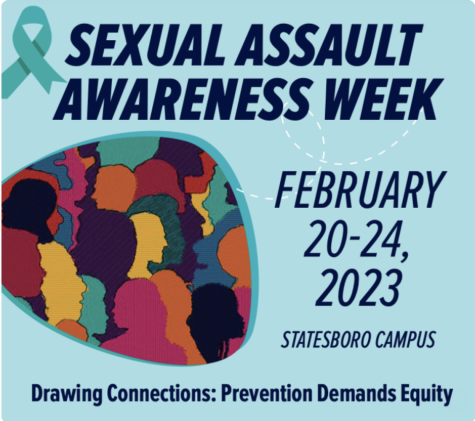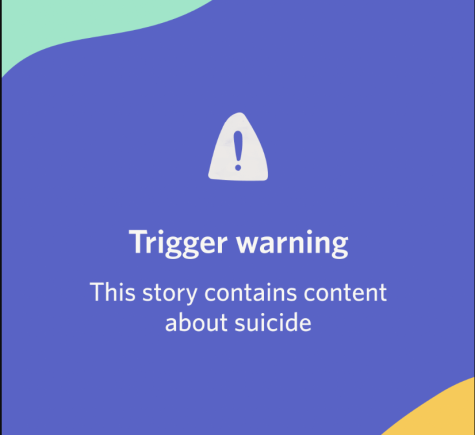Workout Injury Prevention & Safety Tips
April 11, 2019
Especially with the summer season being right around the corner, people are heading to the gym to get and stay in shape. However, it’s important to remember to stay safe and avoid injury while fulfilling your fitness goals.
Jenna Morogiello is the injury prevention and care coordinator for the RAC at Georgia Southern University. She gave some safety and injury prevention tips for people working out.
General Injury Prevention & Safety Tips:
Morogiello said one of the most important injury prevention and safety tips is warming up, which consists of two components: general and specific.
A general warm-up gets the blood flowing in the body, said Morogiello.
“A general warm-up would be getting your heart rate up, so this could be a light jog, could be doing the elliptical, whatever gets the blood going, and the purpose of this is to warm the body because if the muscles are warm they’re less likely to tear,” said Morogiello.
A specific warm up prepares you for the movement you’re about to do.
She used lifting weights as an example, saying you would need to start with about 50 percent of the weight you are going to be lifting and work your way up to your actual weight.
Safety for Cardio
Morogiello said warming up is crucial when it comes to cardio.
“A lot of things that I see as an athletic trainer would be people are wearing improper footwear and then they’re also switching their training surfaces, so if you go from running on a treadmill and you start running on the pavement, that’s where you’re going to see a lot of shin splints or overuse injuries or people who run the same direction on the track all the time,” said Morogiello.
Morogiello said to make sure you switch your direction if you’re running a track or a course and to make sure you are consistent with your footwear, making sure it is comfortable and nothing hurts.
She also said running on a soft surface, such as on a track or on grass, is less wear and tear on the body, and that pavement is the most aggressive surface.
Breaking in Shoes

Morogiello said breaking in footwear should be done gradually unless it’s immediately comfortable with no issues.
“A lot of times what happens is people try to wear shoes all day everyday as soon as they get them … and then their feet hurt and what happens when your foot hurts is sometimes that can change your biomechanics,” said Morogiello.
She said that sometimes with new footwear, you start to favor a different side, lean one way or your foot rotates a certain way. This is called supination and pronation.
Morogiello also explained that new shoes change biomechanics which causes injury or irritation to tendons.
Injury Prevention for Weightlifting
Morogiello said to make sure you’re properly progressing your workouts. She said you never want to do the same workout multiple days in a row.
If you really want to work out chest one day you want to do bench but the next day you also want to do chest, you would want to switch your exercise to a different way to work out that body part.
“A lot of times we see people who get really excited about working out, which is great but then they overdo it, so they’ll do the same thing every day or they don’t give themself an adequate rest day. So proper overload and proper progression would be key to making sure that you aren’t injuring yourself,” said Morogiello.
Morogiello said there’s an introspective and mental aspect to lifting. She said that if you have a previous injury or if you’re tired, you need to be more mindful of what you’re doing in the gym to avoid injuries.
Rest Day

Morogiello said the amount of rest days depends how well someone is trained.
She said that beginners (defined as 2 or less months of training) lifting weights 2-3 times a week, intermediate (defined as 2-6 months), 3-4 days a week, advanced 4-7 days a week, but she recommends 6 days bc she thinks rest day is important.
“When I say rest day–if you’re someone who is very trained, so you’re very in shape, a rest day for you way be an active recovery day. And what that looks like is swimming, biking, low-impact activities like that.
“So it doesn‘t mean just sit there and do nothing–that’s what a lot of people think, but an active recovery is just as important, so it really just depends on where you are in your fitness journey as to how much rest is appropriate, but a good gage is if you’re not sleeping or if you’re in pain, or you’re overtraining ,because overtraining a symptom is not sleeping, so you can gage it by how you feel as well,” said Morogiello.
Other Tips

“Whether you’re using equipment or not, it’s really important to be in front of a mirror so that you can see if your form is good and you can see where you’re sitting in comparative to where your upper-body is,” said Morogiello.
She said to make sure you have an adequate space to work out in and to be mindful of spatial awareness.
A Quick Note on Abs
Morogiello said crunches are not the answer if you’re looking for abs. Diet and complex movements that move multiple parts of the body and joints lead to more core development.
She said that doing squats, lunges, deadlifts, bench presses or even running engages your core a lot more than just doing crunches.
“So just keep in mind the more complex the movement, the more engaged your abs will be,” said Morogiello.
What to Focus On
You don’t want to go three days without exercise to one body part to stay in a state of anabolism which is gaining muscle and not breaking it down, said Morogiello.
Morogiello said you don’t have to split different body parts on different days like shoulders, back or legs.
“As long as you’re working out that body part and not going three days without working it out, then you’re fine,” said Morogiello.
She said you could do upper-lower, you could do push-pull day, or even full body three days a week. She explained if you’re someone who likes to do full body, then to do it about three times a week with adequate rest or, if you like to break up your workouts, she would recommend an upper day and a lower day. Or if you’re into body-building, chest and triceps, back and biceps as long as adequate rest and not waiting more than three days.
Number One Thing to Prevent Injury: Listen to Your Body

“People aren’t really in tune to how much load they’re putting on themselves,” said Morogiello.
She used the example of a student who didn’t sleep the night before, had a really hard test and now is at the gym trying to lift a lot of heavy weight.
“The body doesn’t know the difference between stress at the gym and stress from whatever else you were doing that day so from a cellular standpoint that can be too taxing on the body,” said Morogiello.
She said that everything you do will affect your training, including stress, not sleeping and not eating enough.
“A lot of people are on this new diet – the Keto diet – and they don’t get enough carbs to fuel their workout,” said Morogiello. “It’s really dangerous. We see a lot of people passing out from that.”
Morogiello said some important things to be mindful of are: Did I fuel my body properly? Do i have previous injuries? Am i currently in pain? Did I sleep the night before?
“Just being very reflective on your current state is going to help prevent injury and it’s going to help you be present in the gym which is going to give you a better bang for your buck,” said Morogiello.
Symptoms of overtraining:
Morogiello said in an email that over training is usually caused by a poorly designed training program (this can happen when people just copy workout plans from the internet that are too advanced. This is why it is important to have a personal trainer or certified professional helping you). Over training can occur secondary to a variety of factors but is commonly seen due to a lack of adequate recovery, too high of a training volume, intensity or frequency. It can also be due to a lack of proper nutrition and training through an injury or illness. Symptoms include:
- Decrease in performance
- Difficulty recovering from a workout that you normally would not have difficulty recovering from
- Altered resting heart rate and blood pressure (perhaps the most dangerous)
- Increased muscle soreness
- Decreased body fat percentage
- Alterations in hormones (such as testosterone, cortisol, and others)
- Increased stress response (may have difficulty sleeping)
With rest, the body can go back to normal.
Most Common Injuries
Morogiello said she frequently sees the following:
- Ankle sprains from playing sports.
- Overuse injuries from lifting.
- Knee and shoulder pain from running.
“I just can’t tell you enough how many times people will train through an injury or train through pain and they don’t realize they’re doing it,” said Morogiello. “If something doesn’t feel right, that’s your body’s way of saying ‘stop.’”
She said you don’t have to stop working out, you just have to learn how to adjust and train around an injury, not through one.
The most common risk for an injury is a history of that injury, Morogiello said. The chances of getting the same injury are higher. She said knowing this is helpful for a fitness plan, and to let your trainer know about the injury.
Soreness vs. Pain

Soreness from working out typically lasts 2-3 days, but it can last up to 5, said Morogiello.
“But if it lasts up to 5 that means you’ve done some serious muscle damage so I recommend modifying your training,” said Morogiello.
She said that soreness is transient, so it usually gets better as you move.
“So if you’re really sore, the best thing you can do is just go on a walk and just start moving, which will help with the soreness, said Morogiello.
Injury Red Flags:
- Injury is constant
- It lasts more than the 2-3 days
- If it keeps you up at night that is a red flag because of pain muscles aren’t being used when you’re laying down
- Numbness or soreness
- Major deformity or swelling
- If you heard something snap or pop, and it’s painful or you can’t move it
- Bruising or swelling or something doesn’t feel right (especially if there’s a bulge)
Don’t overwhelm yourself
“I think the biggest thing is just having a coach, or having a personal trainer, or somebody that you can confide in, preferably someone that’s certified like we have here, because if you don’t have someone who’s certified or who knows what to do in the gym, it’s easy to overdo it,” said Morogiello. “If you don’t know any better, you don’t know until it’s too late is usually the issue.”
She suggests doing research yourself or, preferably, having someone who can coach you through it, such as a personal trainer. She said they’re here to answer any questions and students are always welcome to come in and ask.
She said ito remember that “slow progress is progress” and that change and healing take time.
“Maybe one day you just need a rest day and that is part of your healing. It’s not that you’re failing, it’s just part of the journey,” said Morogiello.
Motivation for those just starting to work out
Morogiello said that change takes time, and it also fluctuates – it’s not a linear path.
She said when she was in high school, she was planning on playing basketball and ended up tearing her ACL and MCL.
“It was just one of those things where I didn’t want to give up but sometimes days are just really hard and you’re like … ‘how do I do this?’ And so I found this quote that I really liked and it said, ‘Never let today’s disappointments overshadow tomorrow’s dreams,’ and so that was kinda my mantra for that hard time,” said Morogiello.
She suggests to find someone or something to motivate you, whether it’s a quote, picture or person to look at in the hard times.














